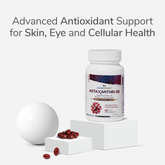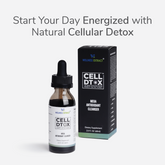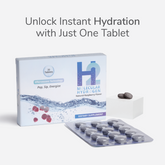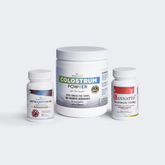Estimated Reading Time: 7 minutes
|The Sunshine Vitamin Has a Dark Side?
We get it—vitamin D has earned a strong reputation in the world of health and wellness.
Good for bones? It is.
Mood support? Definitely.
Immune function? It helps there, too.
But a common question many people ask is, Can you take too much vitamin D?
Just like cake or a long Netflix binge, too much of a good thing can backfire.
So, let’s dig into the real deal on vitamin D overdose—how much is too much, what happens when you go overboard, and how to strike that just-right balance.
What Does Vitamin D Actually Do?
Vitamin D helps your body absorb calcium, which keeps bones and teeth healthy. It also helps your muscles work properly and your immune system stays strong.
But many people have low levels because:
-
They don’t get enough sunlight
-
Their diet lacks vitamin D-rich foods
-
Their body doesn’t absorb it well
So yes, vitamin D is essential. But not something you want to take blindly.
How Much Vitamin D Do You Actually Need?
According to standard recommendations for healthy individuals:
|
Group |
Recommended Daily Allowance (RDA) |
|
Infants (0-12 months) |
400 IU |
|
Children (1-18 years) |
600 IU |
|
Adults (19-70 years) |
600 |
|
Pregnant/Breastfeeding |
600 IU |
|
Older adults (71+) |
800 IU |
That said, doctors sometimes recommend higher doses if you have:
- Vitamin D deficiency
- Hypoparathyroidism
- Certain autoimmune or chronic illnesses
But that’s usually done under supervision.
So… Can You Take Too Much Vitamin D?
Yes, absolutely.
This is one supplement where taking extra does not give extra benefit. And in high amounts, it can be risky.
Know Your Limit:
Safe upper limit for most people: 2,000 IU per day
Toxicity risk starts above: 10,000 IU per day (especially for long periods)
What Happens If You Take Too Much?
Vitamin D toxicity, also called hypervitaminosis D, causes too much calcium to build up in your blood. That leads to symptoms like:
- Nausea or vomiting
- Weakness or fatigue
- Loss of appetite
- Constipation
- Excessive thirst or urination
- Kidney stones
- Headache
- Confusion
- Muscle pain
- High blood pressure
- Irregular heartbeat and coma (in severe cases)
Warning:
These symptoms don’t come overnight. Toxicity builds slowly over weeks or months of high-dose intake.
Myth Buster: “But It’s Just a Vitamin!”
A lot of people think:
"It’s natural, so it can’t harm me."
Truth: Vitamins in very high doses can be as harmful as certain drugs — especially fat-soluble ones like Vitamin D, which gets stored in your body (mainly in the liver and fat tissues).
So, it's not like Vitamin C that gets flushed out easily. What goes in, stays — and builds up.
Who’s at Risk of Taking Too Much?
Some people are more likely to get into trouble with vitamin D doses:
- People self-diagnosing and taking high-dose supplements without testing
- Those following “megadose” trends they see on social media
- Those who take multiple supplements without checking the labels
- Individuals with kidney disease (they process vitamin D differently)
- People already on high-calcium diets or taking calcium supplements
- People with sarcoidosis, tuberculosis, or certain lymphomas (they naturally produce extra vitamin D in the body)
How to Supplement Safely
If your doctor recommends Vitamin D supplements, here’s how to take them safely:
|
Scenario |
Typical Dose |
Frequency |
|
Severe deficiency (<12 ng/mL) |
6,000 IU daily or 25,000–50,000 IU weekly |
For 8 weeks, then reassess. |
|
Moderate deficiency (12–20 ng/mL) |
800–1,000 IU daily |
For 3 months, then reassess. |
|
Insufficiency (20–30 ng/mL) |
600–800 IU daily |
Daily for a few weeks (with monitoring) |
|
General maintenance (≥30 ng/mL) |
1000-2,000 IU |
Daily with meals |
|
High-risk maintenance |
3,000–6,000 IU daily |
Daily, for those with obesity, malabsorption, certain medications, or darker skin tones. |
Capsule Confusion:
Always check the IU amount per capsule. Many products contain very high doses — don’t assume one capsule = one day.
How to Read Vitamin D Supplement Labels
When choosing a supplement:
- Look for “cholecalciferol” (that’s vitamin D3—the form your body makes naturally).
- Check for the form of delivery — capsules, softgels, liquids, and sprays all absorb differently; choose what fits your routine and digestion best.
- Pick reputable brands with third-party testing.
Did You Know?
The term "IU" stands for International Units—a measure of vitamin potency, not weight. Confused? A little. But you’ve got this now.
How to Know If You’re Taking Too Much?
Ask your doctor for a blood test called:
- 25(OH)D (25-hydroxyvitamin D) – this measures Vitamin D levels
-
Normal range: 30 to 50 ng/mL
-
Above 100 ng/mL = too much
-
Above 150 ng/mL = risk of serious toxicity
Also, check your blood calcium levels if you’re on long-term high-dose Vitamin D.
Weird But True:
Some people with a vitamin D overdose report a “metallic taste” in their mouth. That’s your body saying “enough!”
Can You Overdose Through Food or Sun?
Honestly? It's highly unlikely. Your body’s pretty smart.
1. Sun exposure
Your skin naturally regulates how much vitamin D it produces. After a certain point, it simply stops making more—no matter how long you stay in the sun.
2. Food
Most vitamin D-rich foods (like fatty fish or fortified milk) contain relatively low amounts. You’d have to eat a lot to even get close to overdose levels.
So, unless you’re downing massive amounts of cod liver oil (please don’t), your diet and sunlight alone won’t push you into the danger zone.
Fun Fact:
A single egg yolk has about 35 IU of vitamin D. You’d need to eat 100 eggs a day to hit the overdose limit. (We don’t recommend it.)
Also Read: 10 Highly Inflammatory Foods to Avoid & 10 Anti-Inflammatory Foods to Include in Your Diet
What About Kids and Seniors?
Both kids and older adults need vitamin D—but they also face higher risks from too much.
- Kids: Their smaller bodies are more sensitive to overdoses.
- Seniors: Often take multiple supplements and medications, increasing the risk of accidental over-supplementation.
Fun Fact:
Seniors need more vitamin D due to thinner skin (which makes less from sunlight). But not too much! It’s a Goldilocks game—just right.
Final Word – Respect the Dose, Reap the Benefits
Vitamin D is essential — but it’s not a “more is better” nutrient. So, can you take too much vitamin D? Yes — but doing so won’t boost your health faster; it may actually do the opposite.
That’s why it’s important to stick to the dose that’s right for your body, based on your blood levels and doctor’s advice. Check your supplement labels. And if you’re ever unsure, get your levels tested before guessing.
Because when it comes to vitamins, smart is always better than extra.
Key Takeaways
- Vitamin D is essential, but too much can cause serious health issues—more isn’t always better.
-
Can you take too much vitamin D? Yes — taking over 10,000 IU daily for weeks risks toxicity—watch out for symptoms like nausea and fatigue.
-
Your body regulates vitamin D from sunlight and food, so overdose from natural sources is very rare.
-
Always check supplement labels—many capsules have high doses, so don’t assume one pill equals a safe amount.
-
Get your vitamin D levels tested before upping your dose—smart supplementation beats guesswork every time!
Disclaimer: This blog is for informational purposes only and does not provide medical advice. Always consult a healthcare professional before making changes to your diet or health routine. Individual results may vary.
References
- National Institutes of Health. Vitamin D. National Institutes of Health. Published 2024. https://ods.od.nih.gov/factsheets/VitaminD-HealthProfessional/ (Accessed on 3/07/2025)
-
Yadav B, Gupta N, Sasidharan R, et al. 800 IU versus 400 IU per day of vitamin D3 in term breastfed infants: a randomized controlled trial from an LMIC. European Journal of Pediatrics. 2022;181(9):3473-3482. doi:https://doi.org/10.1007/s00431-022-04533-5 (Accessed on 3/07/2025)
-
MedlinePlus. Vitamin D Deficiency. Medlineplus.gov. Published 2019. https://medlineplus.gov/vitaminddeficiency.html (Accessed on 3/07/2025)
-
MedlinePlus. Hypervitaminosis D. medlineplus.gov. https://medlineplus.gov/ency/article/001594.htm (Accessed on 3/07/2025)
-
Annamalai C, Viswanathan P. Vitamin D and Acute Kidney Injury: A Reciprocal Relationship. Biomolecules. 2025;15(4):586. doi:https://doi.org/10.3390/biom15040586 (Accessed on 3/07/2025)
-
Gianella F, Hsia CC, Sakhaee K. The role of vitamin D in sarcoidosis. Faculty Reviews. 2020;9. doi:https://doi.org/10.12703/b/9-14 (Accessed on 3/07/2025)
-
Amel R. Hypercalcaemia as the first manifestation of lymph node tuberculosis. Endocrine Abstracts. Published online May 2, 2023. doi:https://doi.org/10.1530/endoabs.90.ep205 (Accessed on 3/07/2025)
-
Ogawa M, Morikawa M, Kobatake M, et al. Hypercalcemia Associated with the Ectopic Expression of 25-hydroxyvitamin D3-1α-hydroxylase in Diffuse Large B-cell Lymphoma. Internal Medicine. 2022;61(16):2489-2495. doi:https://doi.org/10.2169/internalmedicine.8933-21 (Accessed on 3/07/2025)
-
Sadat-Ali M, Al-Anii FM, Al-Turki HA, AlBadran AA, AlShammari SM. Maintenance Dose of Vitamin D: How Much Is Enough? Journal of Bone Metabolism. 2018;25(3):161. doi:https://doi.org/10.11005/jbm.2018.25.3.161 (Accessed on 3/07/2025)
-
American Association of Clinical Endocrinology. Vitamin D Deficiency. https://pro.aace.com/sites/default/files/2019-02/Vitamin_D_Deficiency_formatted.pdf (Accessed on 3/07/2025)
-
Sizar O, Khare S, Goyal A, Bansal P, Givler A. Vitamin D Deficiency. PubMed. Published 2023. https://www.ncbi.nlm.nih.gov/books/NBK532266/ (Accessed on 3/07/2025)
-
PubChem. 25-OH-Vitamin D3. Nih.gov. Published 2025. Accessed March 27, 2025. https://pubchem.ncbi.nlm.nih.gov/compound/25-OH-Vitamin-D3 (Accessed on 3/07/2025)
-
United States Department of Agriculture. Nutrients: Vitamin D (IU). USDA. https://www.nal.usda.gov/sites/default/files/page-files/Vitamin%20DIU.pdf (Accessed on 3/07/2025)









![Top 5 Best Vitamins for Men in Their 30s [Backed by Science!]](http://wellnessextract.com/cdn/shop/articles/Vitamin_for_men_8fe0fe21-19b1-4020-b895-dc104449637e_165x.webp?v=1765878148)




























